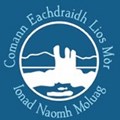Story
The Historical Society on Lismore needs financial support for the analysis and conservation of the 1500 valuable finds which its team of volunteers have rescued from a newly discovered Early Medieval site on the island. This is a unique opportunity to contribute to one of the most exciting heritage developments in Scotland today – revealing not only where St Moluag’s monks lived and were buried from the sixth century, but also the workshops associated with the monastery where highly skilled craftspeople were paid by the church and the local elite to produce works of art, such as highly decorated jewellery, and elaborate carving in stone, wood and horn. The site is clearly a “centre of excellence”, an internationally recognised place like Iona and Dunadd, and it would have hosted the great and good of the time. Moluag’s monastery deserves to be thoroughly explored and interpreted. Lacking a near-contemporary biographer, Moluag’s importance in the early years of Christianity in Scotland has, until recently, been overlooked.
Background
From 2016, a team of dedicated volunteers, led by Dr Clare Ellis, raised grant funding to start exploring the area round the medieval Cathedral of Argyll near the north end of Lismore to try to understand the heritage of the area. There were strong traditions of a sixth century monastery founded by St Moluag, and it was the established spiritual (and nationally important) significance of the area that convinced the Church, king and local lords (including the MacDougall Lord of Lorn) to establish the cathedral there around 1200.
However, it was not until 2019, that an early medieval cemetery was located in an unpromising boggy area next to the cathedral, within an older cemetery wall. The team had finally found the monastery which had been “lost” for over a thousand years. Returning in 2021 and 2022, following a geophysical survey, the team uncovered a very complex site, including
• an extensive cemetery;
• the scale, age and quality of bone preservation . Bone preservation in the cemetery is UNIQUE for the west of Scotland. The only comparable site in Scotland is the Isle of May . The information which can be accessed from the bones will be on a totally different level from any similar site in western Scotland has ever had before .
• an enigmatic oval drystone building;
• extensive evidence of fine metal working (187 crucibles, moulds for brooches & rings);
• fragments of several carved cross slabs (with stylistic details from Irish and Pictish traditions);
• numerous examples of fine carving of wood, horn & bone (rare in a Scottish context).
• Medieval pottery and glass
• A range of small metal objects
All of this was adjacent to another workshop and residential area, which a coin find dated to the time of the building of the cathedral (c1250)
The Project
We need to pay for the professional analysis and conservation of all of these artefacts. It is work of national/international importance The results, together with DNA work already commissioned from the Crick Institute in London on bones from10 human burials (revealing ages, genders and origins), will tell us what metals were being worked (copper, silver, possibly gold); and the style, uses and significance of each object. In due course, all of this information will be fully interpreted and published in an account of the six years of the Lismore archaeological project. With this information, the community will be able to develop a rich interpretation centre, attractive to visitors, and contributing to the sustainability of life on the island.
